Capacitive Touch Screen Assembly Process: Complete Guide
News
Aug-17-2025
What is a Capacitive Touch Screen?
A capacitive touch screen identifies the touch according to the electrical nature of a human being. The capacitive ones, in contrast to the resistive screens, rely on the proximity of your fingertips, as opposed to the resistive screens that rely on the amount of pressure. These displays are built in numerous layers, and the following layers are covered with the display panel, sensor layer, and cover glass. All these parts have a significant role in as far of performance, sensitivity, and lastingness are concerned.
Capacitive Sensor Layers
Before getting into the assembly process, it is necessary to know the key components:
- Cover Glass: It is common to find a toughened glass (e.g., Gorilla Glass)
- ITO Sensor Layer: The Layer that passes light, and a positive or negative reactivity is reached under an Indium Tin Oxide application
- Adhesive Layer: The optical or OCA (Optically Clear Adhesive) layer that is being used in the gluing of the layers
- Touch Controller IC: Administrators of signals sent through the sensor
Step-By-Step Assembly of Capacitive Touch Screen
- Cleaning in a Cleanroom Environment
The bare parts are processed under the clean room (Class 1000 or higher). This prevents the formation of any dust particles that would either reduce sensitivity or cause poor bonding.
- ITO Coating of the Pattern
The ITO sensor coating takes place on PET film or glass. In multi-touch, there is a need to design electrode patterns, and it is done through laser etching.
- Optical Bonding
The cover glass is matched to the ITO sensor layer with the help of an OCA film. Vacuum and bubble-free, therefore, it does the real bonding, which eliminates air voids.
- Lamination
There is high-pressure bonding of the cover glass that overlays a sensor layer. This increases the assembly power and makes it powerful.
- Incorporation of Touch Control
It is in the form of a touch controller IC, which is placed on a flexible PCB and has a sensor connection. This is to correct the signal processing.
- Association with the Display Module
The sensor-glass is particularly developed and bonded to the LCD or the OLED panel by fitting it in the right position, which makes it fit perfectly, such that no misalignment occurs around it in the display screen, and this does not lead to any discoloration effect to be seen on the display.
Implications and Problems: Technical Implications and Problems
- Electromagnetic interference: This casts bewilderment on the sensitivity of the touch.
- Sensor Calibration: This should be carried out during the assembly.
- Expansion Thermal: There must be a material compatibility so that it can withstand the warping.
- Inhomogeneous adhesives: The degrees to which a uniform adhesive vary with the material and with response can be a result of inhomogeneous adhesives.
Amazing Techniques of Assembly
- To put it precisely, laser cutting: Laser cutting is also used to cut the layers down to microns.
- Anti-Fingerprint and Anti-Glare Coatings: All these layers are available to bring about a better user experience.
- Multi-touch Firmware Integration: This is what makes the pinch and zoom, and swipe.
Implementation of Capacitive Touch Screens
- Consumer Electronics: Tables, smart watches, and smartphones
- Infotainment and control panels: automobile Displays
- Ruggedized touch screens: Industrial touch panels
- Healthcare Apparatus: Diagnostic equipment, monitors
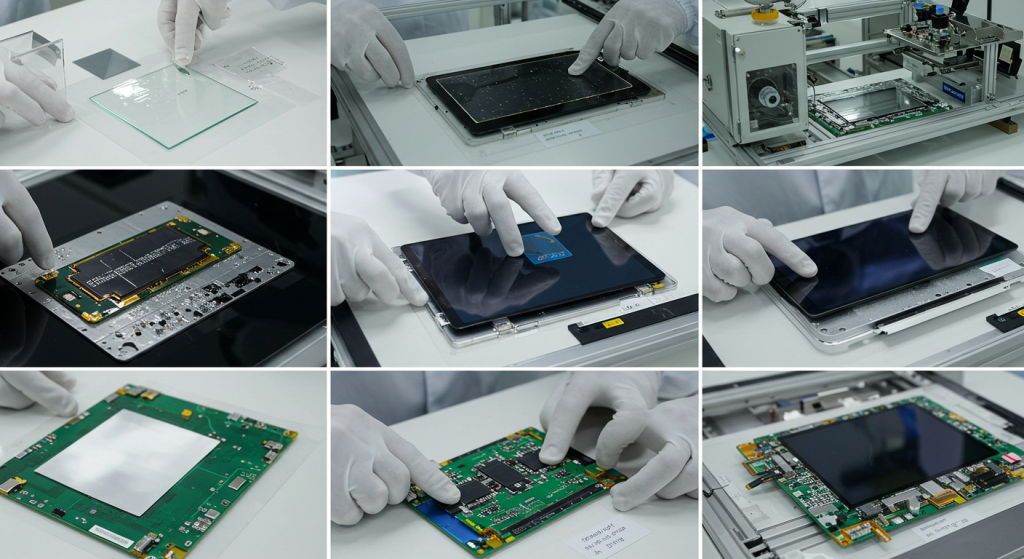
Testing and Quality Assurance of Capacitive Touch Screen Assembly
After assembling, they test every screen and make it go through the quality tests of its performance and durability. A wrong screen will cause a delay or ghosting, or even burnout prematurely: all the problems that you probably cannot afford in any of the mission-oriented gadgets.
- Visual Inspection:
By using the bright light which has a high lead, technicians inspect each and every unit by checking all the visible defects that they observe in the unit, such as levelling, air bubbles, delamination, and contamination. Sensor alignment is also checked and verified concerning the cover glass and the sensor layer to give the right locations of the responses.
- Touch Sensitivity Test:
Touch sensitivity of the conveniences is tested with the assistance of calibrated probes /and human finger physiques and utilized to test uniformity of the screens. There is monotony, a gap, a lack of continuity, noticed and has to be corrected or addressed.
- Temperature Cycling:
Reliability of screens is subsequently made temperature-sensitive, whereby such screens are subjected to high extremes of hot-cold temperatures (e.g., -40 to +85). This will depict the ineffectiveness of adhesives or strains because of the expansions of materials, something that is of utmost significance to the automotive and industrial customers.
- ESD Test:
The capacitive sensors may get damaged because of the presence of static. The ESD guns are deployed in testing and during testing of the electricity simulation touch of the human. During such a simulation, the circuits and ITO must be capable of handling realistic electrical touch contact in the world.
Best Practices and Purchasing Guidelines
This is the information that will be useful in the procedure of sourcing or assembling the capacitive touch screen parts to avoid some of the costly mistakes and problems that involve the best workings of the capacitive touch screens:
- Optical Bonding: This one is employed to boost durability, resolution in sensitivities, and sunlight vision. Premium usage of smartphones, outdoor kiosks, or crude displays is ideal.
- Cleanroom Standards: Cradles are maintained so that the suppliers maintain ISO Class 7 and above cleanroom standards. Microscopic dust: Capacitive misread or visibility spots.
- TO ITO and Adhesive Integrity: where ITO is involved, good coatings on indium tin oxide can achieve very good bondings and strong and dependable attachment with optical adhesives (e.g., LOCA or OCA), and dependable transport of signals can be accomplished, and robust bonding can be guaranteed.
- Demand Certifications: Demand: This has to be ISO 9001, CE, and RoHS. These suggest that there is a good production practice and non-hazardous materials in a factory.
Conclusion
This is where capacitive touch screen manufacturing is a very clean, precise, and technical mix of clean, precise, and clean. There are a lot of process that has to be taken to achieve a smooth feel without any perceived differences, like that of the electrode pattern and thermal cure. As they raise the demand through the industries that start with consumer tech to the other end of healthcare, the perfection of this process comes to the forefront of innovation and perfection. Visit WANTY.
Related Topics
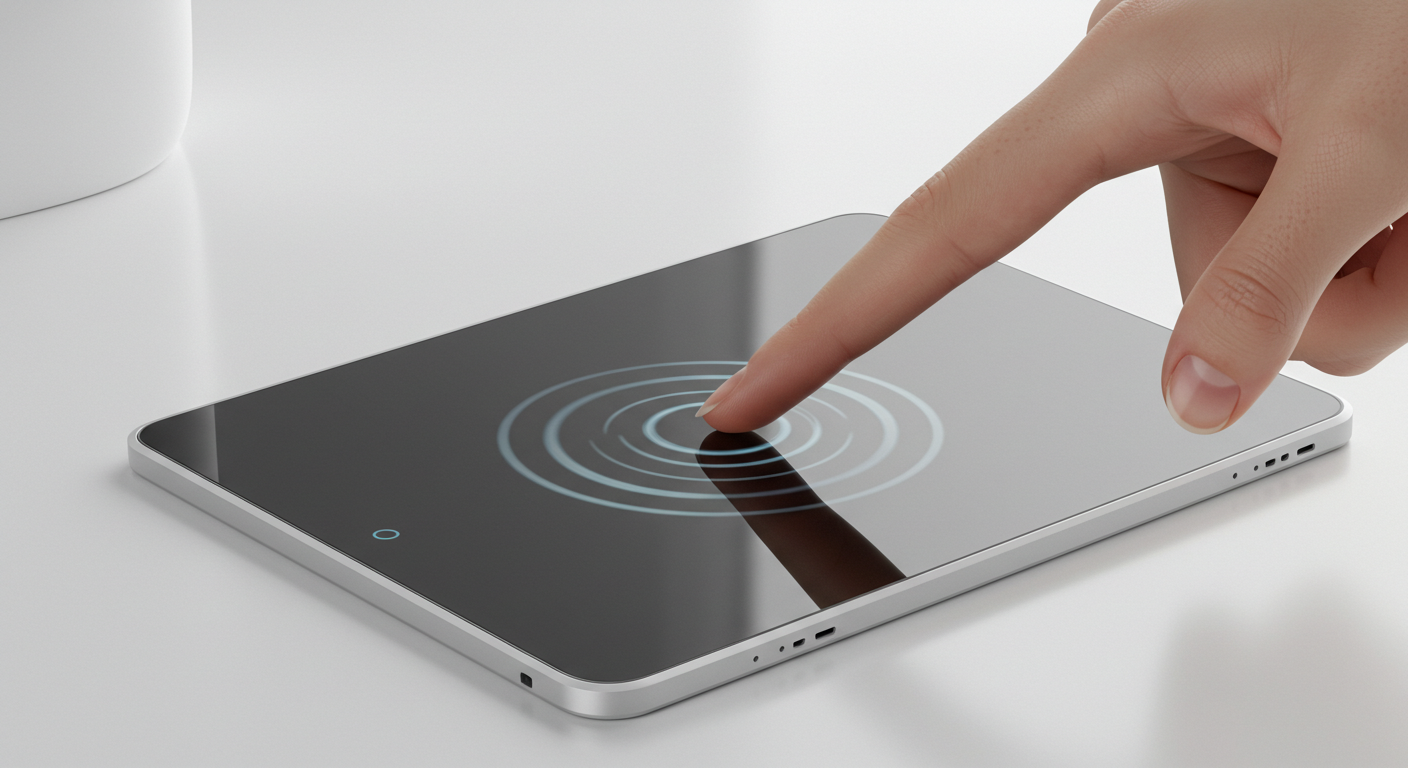
Capacitive Touch Integrated Touchscreen: 2025 Technology
Aug-25-2025
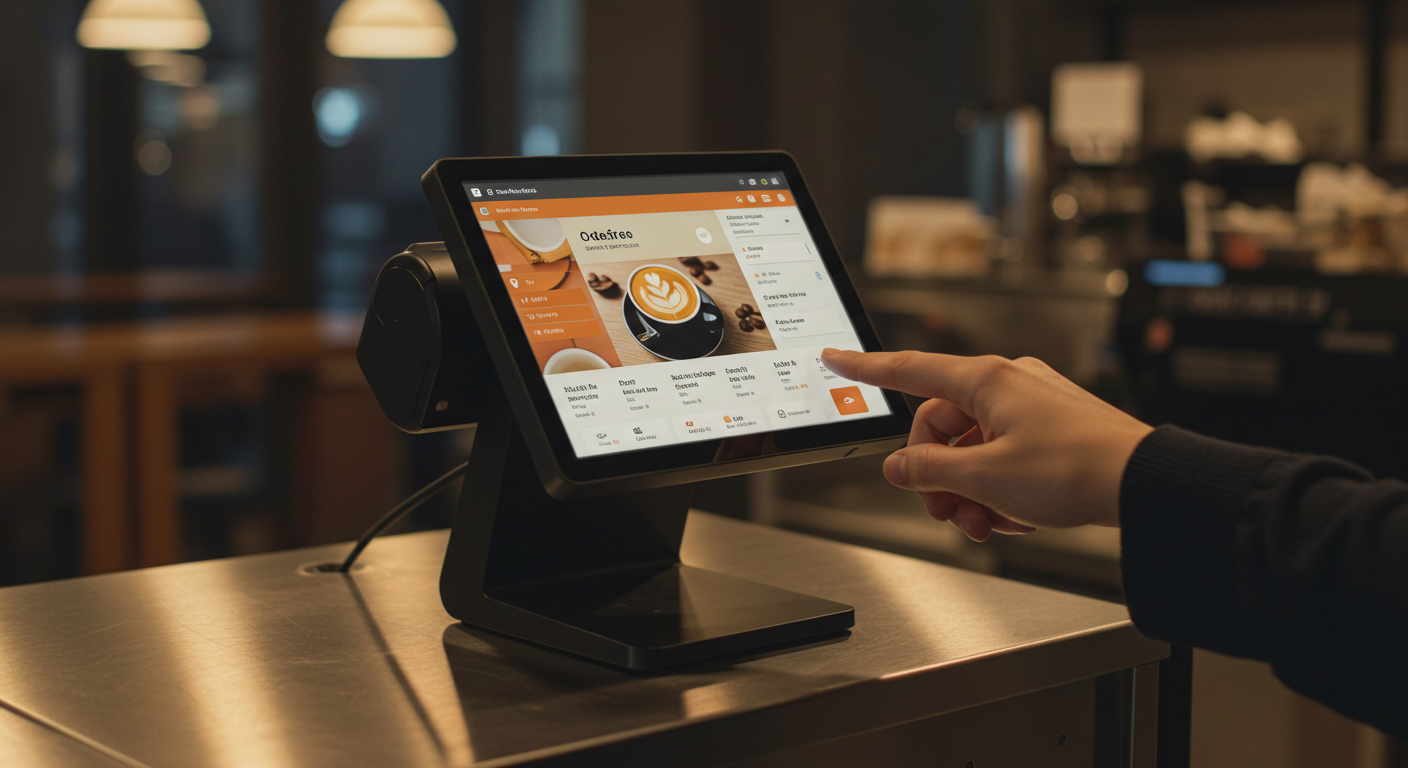
Capacitive Touch Screen POS Terminal – Next-Gen Solutions
Aug-25-2025
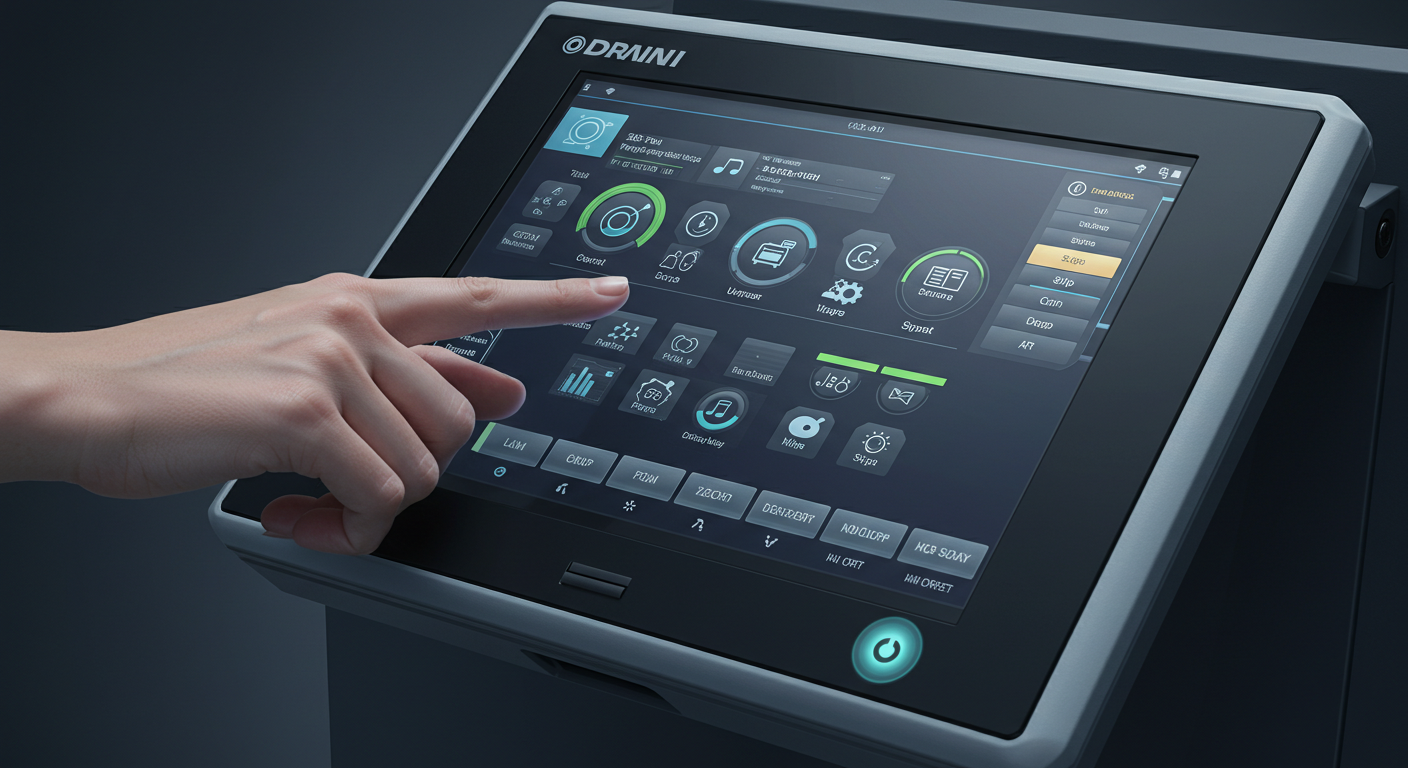
Capacitive Touch HMI Interface | Durable & Ergonomic Control
Aug-24-2025
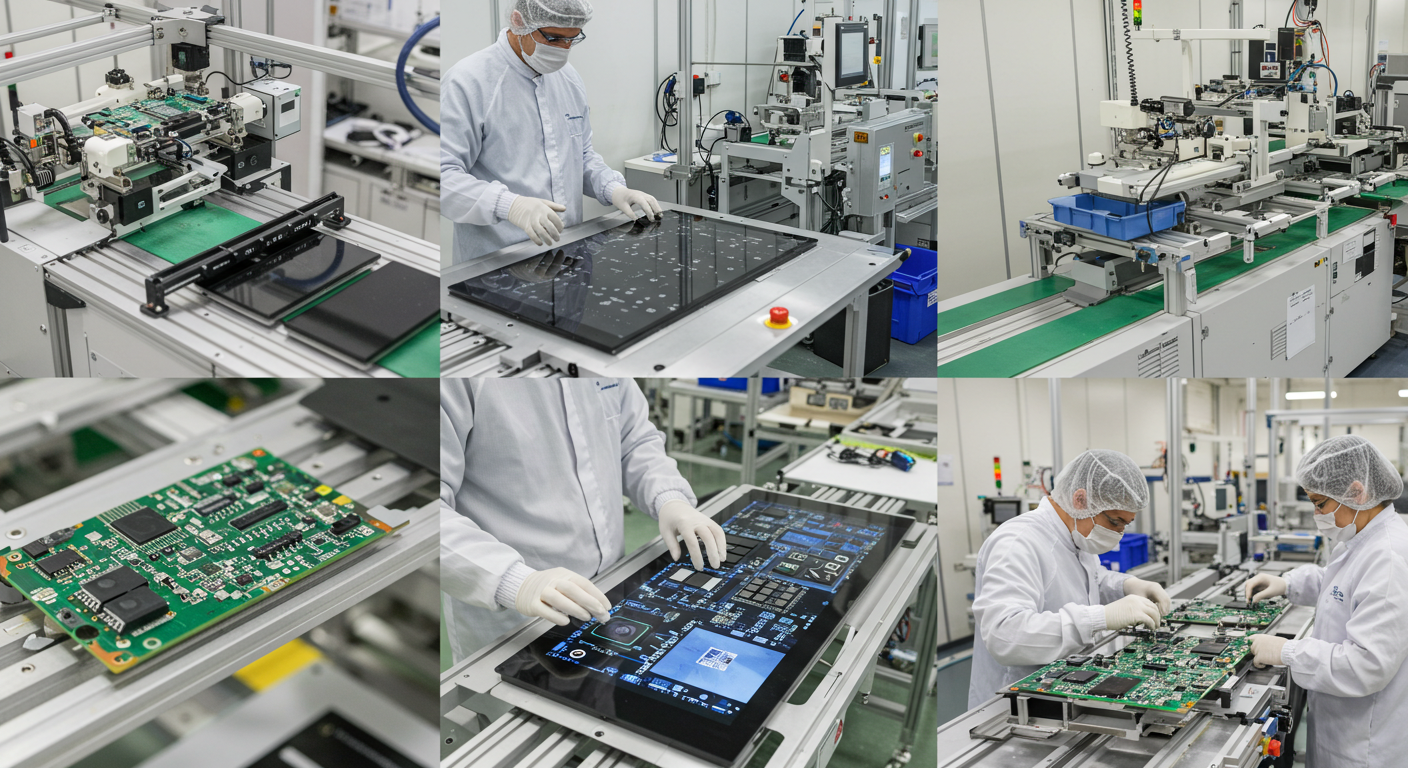
Capacitive Panel OEM Manufacturers – Custom Touchscreen Solutions
Aug-24-2025
Get a Free Quote
✔ 16 Years Manufacture Service ★★★★★
✔ 3 Technical Experts And 52+ Project Engineers Will Assiste You
✔ Wanty Employs Over 52 Engineers, Many Of Whom Come From Leading Tft Lcd Module Companies Such As Tianma And Boe-Varitronix. Each Core Team Member Brings 15 Years Of Industry Experience.
✔ If you would like more information about our products and services, please contact us. Whether you need a standard solution or a customized one, we are here to meet your needs.
✔ Please complete the form below, and the selected location will contact you promptly. Thank you for visiting, and have a great day!
